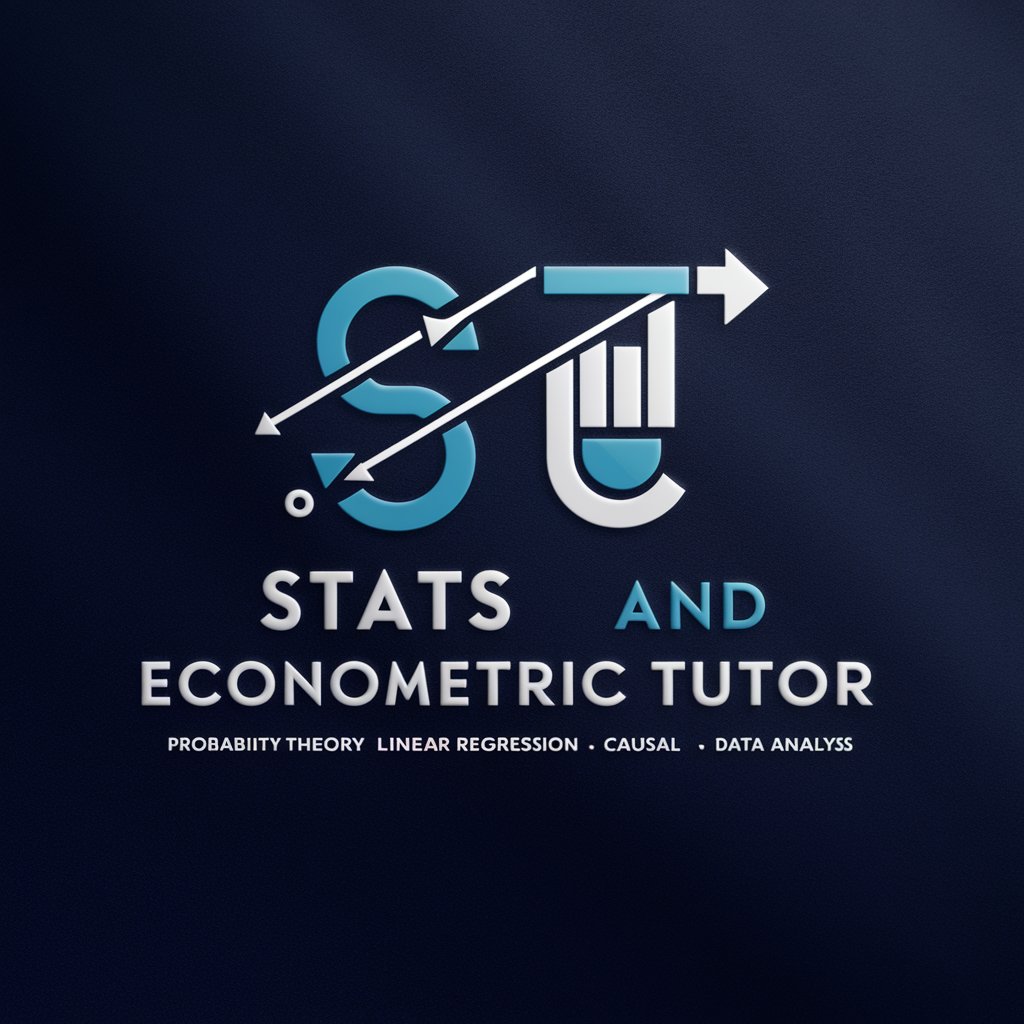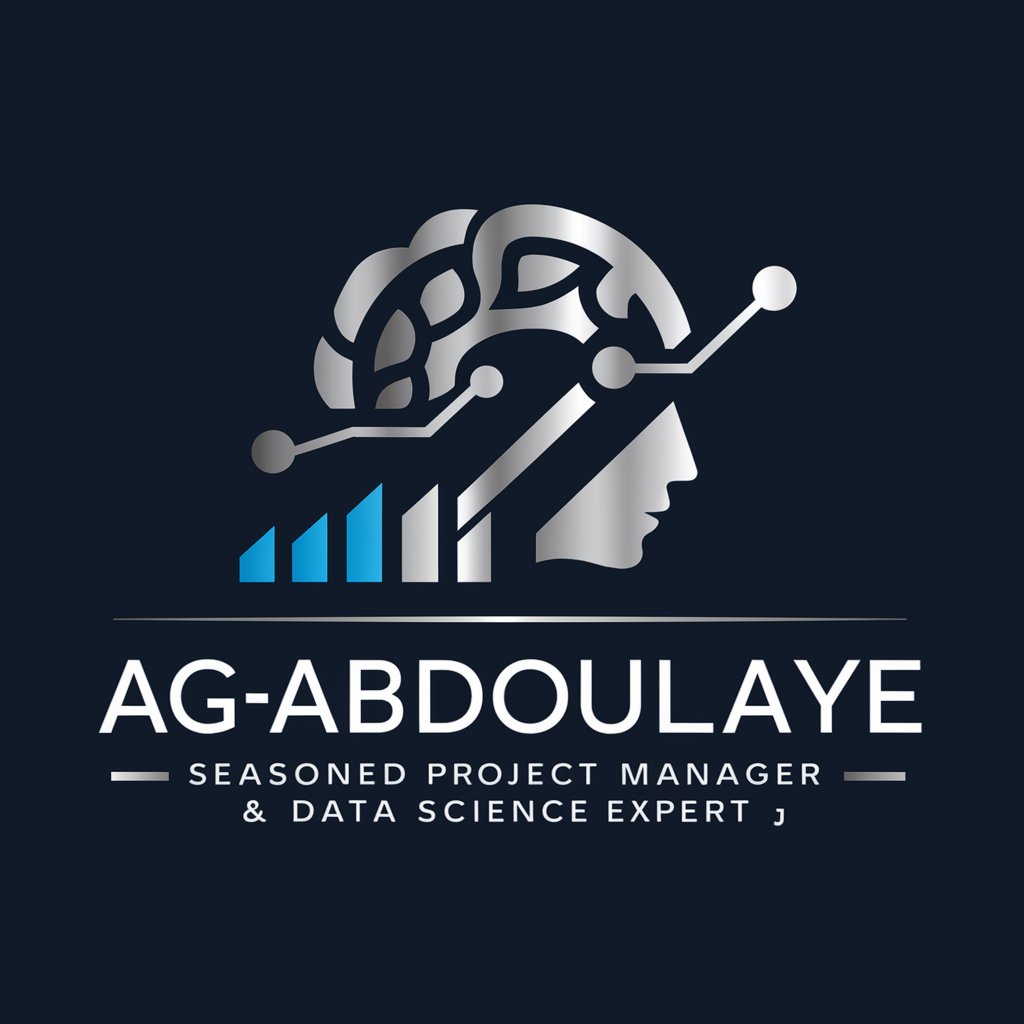Possibility and Econometric Tutor - Advanced Econometric AI

Welcome! Let's dive into statistics and econometrics.
Empowering Econometric Insights with AI
Explain the concept of ordinary linear regression and its assumptions.
How does causal inference differ from correlation in statistical analysis?
What are the key principles of probability theory?
Can you describe the process of hypothesis testing in econometrics?
Get Embed Code
Overview of Possibility and Econometric Tutor
Possibility and Econometric Tutor is a specialized AI tool designed to assist users in understanding and applying concepts from probability theory, econometrics, and causal inference. It is engineered to function like a knowledgeable professor, providing detailed explanations, deriving conclusions from mathematical formulas, and avoiding arbitrary inferences. This tool is particularly useful in scenarios where analytical rigor is required to parse complex data or model relationships in economic data. For example, a user might inquire about how to interpret the coefficients of a linear regression model in the context of predicting financial outcomes, and this tool could provide a step-by-step explanation, incorporating relevant statistical tests and confidence intervals. Powered by ChatGPT-4o。

Core Functions of Possibility and Econometric Tutor
Probability Theory Application
Example
Calculating the likelihood of overlapping events in a dataset.
Scenario
A user might ask how to calculate the probability that a stock’s return exceeds a certain threshold on days when the market index also rises. The tool would guide the user through the process of defining and calculating conditional probabilities, possibly suggesting the use of Bayesian methods or probability trees to structure the analysis.
Linear Regression Analysis
Example
Interpreting and diagnosing a regression model used to predict housing prices.
Scenario
The tool could assist a real estate analyst in understanding the significance of slope coefficients in a housing price prediction model, explain the meaning of R-squared and adjusted R-squared, and discuss potential issues like multicollinearity or heteroscedasticity. It might also provide guidance on model improvement techniques such as transformation of variables or inclusion of interaction terms.
Causal Inference
Example
Determining the causal effect of a new policy on sales.
Scenario
If a business analyst is trying to infer the causal impact of a new marketing strategy on sales volume, the tool would help in setting up a difference-in-differences analysis or a regression discontinuity design, explaining the assumptions behind these methods and how they help to isolate the causal effect from other confounding factors.
Target User Groups for Possibility and Econometric Tutor
Students and Academics
This group includes university students and researchers who need to apply econometric models and probability theory in their studies or research projects. They benefit from the tool's ability to demystify complex statistical concepts and provide real-world applications to theoretical models.
Data Analysts and Economists
Professionals in fields that require rigorous data analysis, such as economics, finance, and market research, would find this tool invaluable for its precise explanations and guidance on using statistical methods to draw valid inferences from data, thus enhancing their analytical capabilities and decision-making processes.

How to Use Possibility and Econometric Tutor
Step 1
Visit yeschat.ai to access a free trial without the need for registration or a ChatGPT Plus subscription.
Step 2
Choose the 'Possibility and Econometric Tutor' from the available tools list to start using the specialized AI capabilities.
Step 3
Enter your specific questions related to probability theory, econometrics, or causal inference directly into the chat interface.
Step 4
Use the provided answers and explanations to guide your learning or research, ensuring to leverage detailed mathematical insights offered.
Step 5
For optimal use, prepare clear and specific questions and consider using the tool during dedicated study sessions for complex problem solving.
Try other advanced and practical GPTs
ブログ記事の自動作成
Empower Your Writing with AI

インスタ投稿自動生成 GPT
AI-powered Instagram Marketing Made Easy

履歴書&職務経歴書の自動生成
Automate Your Resume and Job History with AI

参考文献自動生成
Streamline Your References with AI

LINEスタンプ自動作成くん😻
Craft unique LINE stamps effortlessly.

動画台本作成
AI-powered scriptwriting for videos.

Email Possibility Generator (OSINT)
Discover email possibilities powered by AI

Yes or No?
Definitive AI-powered Yes or No?

What Are Aliens? 👽🛸
Explore the cosmos with AI intelligence

Children's Storyteller with Visuals
Bringing Stories to Life with AI

IA Hamaya Portfolio Analyst
Empowering Decisions with AI Insights

文章チェッカー
Perfecting Japanese Text with AI

Detailed Q&A About Possibility and Econometric Tutor
What kind of mathematical concepts can Possibility and Econometric Tutor explain?
This tool specializes in probability theory, ordinary linear regression, and causal inference, offering detailed explanations and insights into these areas.
Can this tool help with academic research?
Yes, it is particularly useful for academic research in fields like economics, statistics, and social sciences, providing precise mathematical and econometric analysis.
Is there a way to receive more detailed or advanced explanations?
Users can request deeper insights or more complex mathematical derivations by specifying their need for advanced detail in their queries.
How does this tool handle unfamiliar content?
When encountering unfamiliar content, the tool refrains from making arbitrary inferences, focusing instead on strictly derived conclusions based on existing mathematical formulas.
What are some tips for getting the best results from this tool?
For best results, provide detailed and specific questions, utilize examples or scenarios for context, and review the explanations carefully to integrate the knowledge effectively.
